While it is often said that racing improves the breed, sometimes on-track success doesn’t translate to sales on the showroom floor. Such was the case with the Hudson Hornet. Despite dominating stock car racing in the first few years of the 1950s, the Hudson Hornet failed to fly out dealership doors. For the 1954 model year, a mere 24,833 buyers were willing to hand over their cash to own a car with a race-proven pedigree. Our feature car is a 1954 Hornet Special Club Coupe, and while its owner refers to it as rare, I’ve been unable to confirm actual build totals. As a project car, it has a lot to commend it. The vehicle is complete, is structurally sound, and seems to be mechanically healthy. It is also a project car that needs a new home. Located in Vansant, Virginia, you will find this Hudson listed for sale here on eBay. The owner has set a BIN of $23,000 but leaves the option available to make an offer.
The first thing to note about this Hudson is its paint color. That’s a pretty vibrant shade of yellow, and it’s one that I’ve been unable to locate on any Hudson paint charts of that era. That makes me believe that the original owner ordered a custom mix or that someone has performed a color change. I can’t find traces of any other color in the supplied photos, so if it is a color change, the work has been pretty thorough. The paint is presentable, but the owner admits that it will eventually require a refresh. If the buyer decides to tread that path, it seems that they will be working from a sound foundation. The panels look rock-solid, and the frame has no rust issues. The only problem identified is a single hole in the front floor, but the new owner could repair this with a patch. The panels are straight, there’s no evidence of accident damage, and all of the trim is in good order for its age. There are no significant issues with the glass, and the owner says that all of the lights work as they should.
The owner refers to the Hudson’s interior as original, and while its condition is pretty nice, I’m not convinced that the company installed all of the upholstery that we see in the supplied photos. One of the odd areas is the buttoned sections at the tops of both door trims. They are unlike anything I’ve seen in a Hornet of this vintage, and I suspect they are a custom addition. There are a few wear marks across the interior, but there’s nothing that I would class as horrendous. Areas like the armrests might respond positively to some of the newer cleaning products available on the market today, but if the buyer wants to leave it untouched as a survivor, there’s nothing that they’d need to do. The hard trim pieces are in good order, and the dash has a wonderful Art Deco look that is hard to beat. The car isn’t loaded with luxury appointments, but an AM radio must have felt like the height of fashion and technology in 1954.
While many people are quick to point the finger at the lack of a V8 option as the reason for the Hornet’s lack of sales success, the fact was that there wasn’t much wrong with the 308ci six that found its way under the hood of these classics. Our feature car should be sending its 160hp to the rear wheels via an automatic transmission. A ¼-mile ET of 20.5 seconds was nothing to be ashamed of in 1954, and its potential top speed of 100mph was equally impressive. It appears that the owner has recently replaced most of the Hornet’s braking system, along with a selection of hoses and belts. He treated the carburetor to a rebuild, installed new points, along with plugs and plug wires. The list is quite an extensive one, but it seems to have been worth the effort. He says that the Hornet runs and drives, so the open road could be begging for this classic and its next owner.
The Hudson Hornet deserved to be a sales success because it offered buyers in the early 1950s so much for their money. Its styling was distinctive and sleek, its interiors gave away nothing to the opposition, and there was no doubt that they could hold their own in the performance stakes. Had it been a model released by one of “the big three,” I do not doubt that it would’ve sold like hotcakes. Sadly, it was a case of it wasn’t, and it wasn’t. Today, these don’t command huge prices in the classics market, although values have been holding steady. This one looks like a good one that needs very little. I think that the BIN price is optimistic, so if you are interested, it might be worth making a reasonable and respectful offer. You never know, but today might be your lucky day.
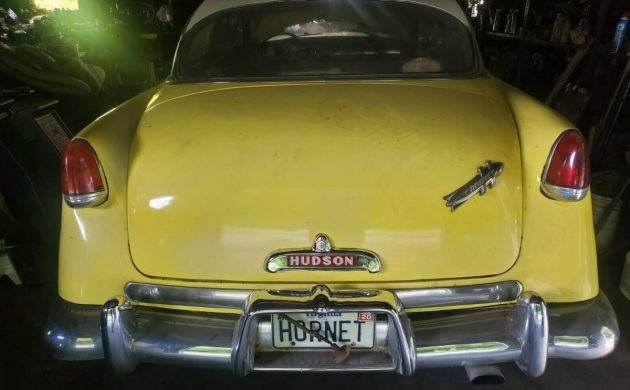
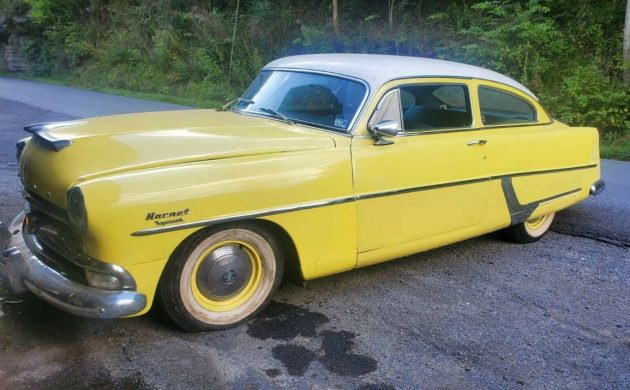
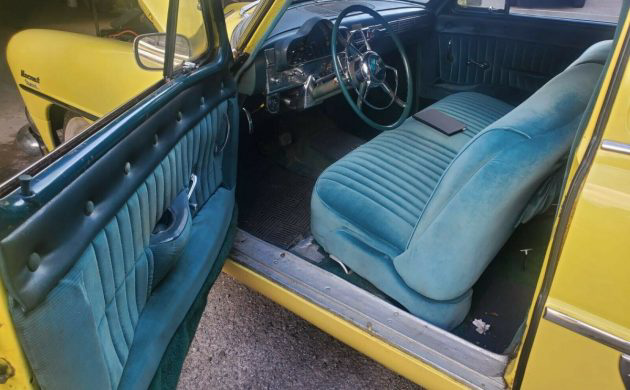
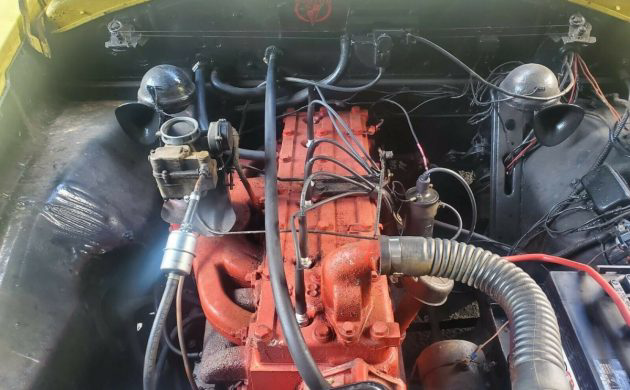
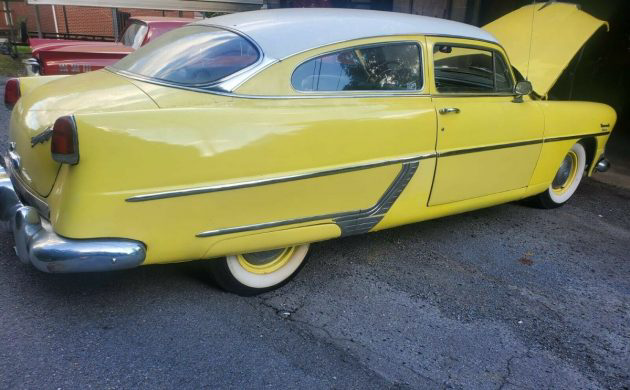


I think it needs the dual carb setup to make 160 HP.Talked with a guy in Kentucky in June who had a nice one.
Didn’t some guy named Smokey race and build these cars back in the 50’s? I remember reading a story one time where it was said he redesigned the engine to rotate backwards for more power in left turns for a oval track. It was said he had lots of tricks up his sleeve that gave him the edge. Oh yeah, they had to turn the rear axle housing over for that special engine.
God bless America
I think his name was Smokey Eunuch.
Smokey Yunick deserves more respect, he earned it.
Steve R
In an issue of Stock Car Racing,they showed Smoky
with his favorite car – a Ford Fiesta!
I was also surprised to read in a book on about the
Mexican Road Race that Bill France co-drove with Curtice Turner in a Nash.
Yunick? As memorialized in “Cars 3”. Smokey had a monthly column in the Popular Science mags of the 1960s and it was often the first thing I would read. He was ahead of his time…the last time I read of him he was playing with a Fiero and a system that would have it run on gasoline vapor, not droplets. It was way more efficient but had a tendency to explode.
By 1954 the 1948 Hudson body was “old” when the big 3 made major changes, at least visually, almost every 2 or 3 years. Hudson managed to put on bigger up standing tail lights but the distinctive longer, lower, body, was still very obvious. But, unlike the Kaiser, this would do well on the interstates of today, both in terms of guts and “handling” especially if you could find the “export” version of the suspension.
EXACTLY ! Why would anyone want a new car with styling from 5 or 6 years back when other companies had fresh new styling and new options ? I’m sure Hudson’s financial problems scared some people off too. I think Studebaker suffered from the same problems ; they were still using their 1953 platform until the end in the 1960s!
This is one of the rarest of the stepdown Hudsons. In 1954 Hudson was on the ropes financially so they put everything they had into selling hard with their top seller the Hornet. This particular model ,the Special, was only made for one year and it had something no other year Hornet had , a brougham model. (thats a two door hardtop) In other years, other models came in this configuration but not the Hornet…except in 1954. It was a stripped model Hornet for sure but NOT under the hood. Highly desirable model of Hudson. BTW Adam, $23,000 isn’t
This is one of the rarest of the stepdown Hudsons. In 1954 Hudson was on the ropes financially so they put everything they had into selling hard with their top seller the Hornet. This particular model ,the Special, was only made for one year and it had something no other year Hornet had , a brougham model. (thats a two door hardtop) In other years, other models came in this configuration but not the Hornet…except in 1954. It was a stripped model Hornet for sure but NOT under the hood. Highly desirable model of Hudson. BTW Adam, $23,000 isn’t a bad price.
Good looking! Also, compare this 2-dr with the 2-dr Kaiser and you can understand my comment about the Kaiser.
I would love this car if it had twin H power (2carbs and a hot cam) and the heavy duty suspension, but it doesn’t. I think the 160 hp was for the H power. That big old fashioned L head six was competitive- I don’t think the more modern Olds rocket v8 was anymore powerful.
Smokey spelled his last name “Yunick”.
Best damn garage in town
The Brougham wasn’t a hardtop. The two door hardtop was a Hollywood and it wasn’t a 1954 only model, it was available from 1952. IMO the silhouette of the hardtop didn’t look as nice as the 4 door Hornet. I also think the 1954 lost the sleek looks of the 50 to 53 Hornet. Although the one piece windscreen of the 54 looked better.
Actually, the Hollywood first became available in 1951.
Absolutely Beautiful vehicle! First one I have ever seen with a bright yellow paint job, which I find makes it even better looking. Wish I had the money!
Nice looking car! Too bad Hudson were stuck with the flathead six. Imagine how much more power if they went with the ohv six.
Kinda big for a Toon Town car
Two omissions in the story
1. The body dated from 1948, so this was it 7th year, When the competitors were on 3-year cycles.
2. Hudson made a big deal of it’s “step down floor”, meaning that the frame was at the perimeters of the car so the floor pan could actually be a few inches below the top of the frame, allowing a lower roof line with the same headroom. This later became common
Right door looks to be non matching paint
Went to a car show today, most rods and customs, a very nice, new looking, ’51 4 door, only modifications that showed were decked, and lowered, a lowered ’51 Hudson is very low!